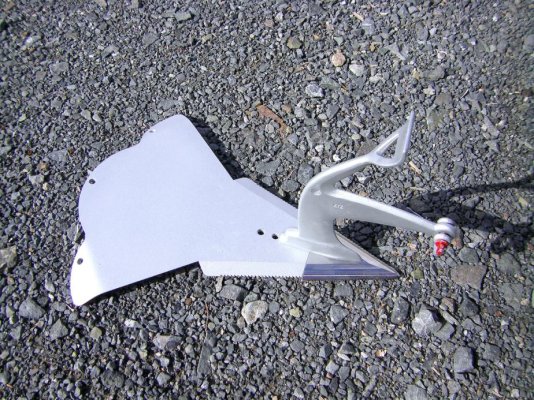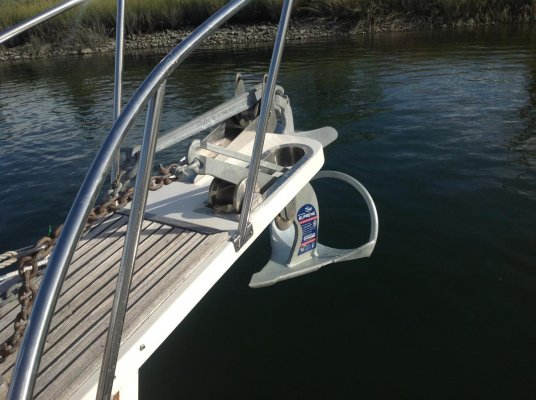First, this does NOT mark a return to posting to the open forum, in large part to avoid endless and mostly pointless threads like this one.
That said, I'm going to make it even more endless and pointless.
Peter has been carrying the load on his own here so I thought I would break my own rule and chime in. As usual, with an analogy, which I've probably used before countless times, another reason for not wasting everyone's time posting to the open board.
One of my all-time favorite quotes came from the man who was arguably Boeing's most talented and creative design engineer, Ed Wells. The first plane he worked on after joining the company fresh out of school was the Monomail. The last plane he worked on as an engineer was the 767. Known as the father of the B-17, he was probably THE driving force behind moving Boeing into using jet propulsion for commercial transports.
In an interview in the mid-1980s I asked him why he had been so willing to embrace the then-still rather iffy jet engine in favor of the tried-and-true piston engines that had so far done a stirling job of powering commercial aircraft. He thought about it for a moment and then said, "Because I realized that life's too short to waste it working on propellers."
And that is how I feel about the old-generation anchors.
I do not feel this way because these anchors don't work. They do. So does a Model A. So does a DC-7. All these old things work just fine today
in the same manner as they worked when they were created. But like Ed Wells' pistons and propellers, there is no reason to stay with old fashioned performance and reliability when there is something so much better out there.
In the case of anchors, today it's the rollbar anchor. Tomorrow it will undoubtedly be something else.
Eric says that rollbar anchors are "fashionable" so that's primarily why more and more people are buying them. I'm sure there are some people who buy them for that reason, but that's not why anyone who wants outstanding anchor performance and understands how the rollbar anchor works buys them.
We'd never even heard of the damn things when we started looking to replace our drag-prone Bruce. A post on the GB forum made us aware of the existance of the so-called "new generation" anchors, so we looked into them. I called Rocna in New Zealand and talked to them for an hour or so about their anchor. We read dozens of user testimonials from all over the world. We studied how and why the rollbar anchor works.
And in the end, we realized that "life is too short to waste it" messing around with old-fashioned anchors when something that truly represented a new way of thinking was available. (Yes, I know the Rocna is based on the Bugel but Peter Smith did add some innovations of his own to the concept.)
Is this a condemnation of the old-generation anchors? Well, I suppose it is. One can drive very successfully across the country in a Model A, and one can have a nice flight across the Pacific in a DC-7. But outside of nostalgic or historic reasons, why would anyone want to?
I realize this is just one more meaningless thread about anchors, and nobody is going to change their minds. It's just anchors after all. You can hold your boat in place with a few barrels welded together and filled with concrete.
But while it's not turbofans and fly-by-light, there is a science to making something small dig into the bottom quickly, and a variety of bottoms at that, and then stay there with a hell of a force trying to pull it out. There are physics and geometry and metalurgy, and the motion of shapes moving through different materials, all of which can be manipulated to be more effective, or less effective.
The rollbar anchor represents a manipulation of these things to be more effective than the anchors that came before. The Fisherman, Navy, Kedge, Danforth, CQR, Bruce, etc. represent a manipulation of these things that were more effetive than whatever came before them. A rock I guess, I don't know.
Anyway, I think Peter has done a good job of explaining why, to him, the rollbar anchor-- a Sarca in his case--- is superior as an all-purpose, small boat anchor to all the designs that have come before. Our own rollbar anchor so eclipses the performance of our old-generation anchor it still amazes me today, and we've been using the thing for some eight years now.
Now, it's 100% true that every anchor works perfectly until the day it doesn't. The deal to me with the rollbar anchors is the day it doesn't is a lot less likely to arrive than it is with the old-generation anchors. So when it comes to risk reduction, these are the kinds of odds I like to have working for me.
Whether one buys into a new design or not is an individual matter. I know a lot of old codgers who think the DC-7, or to most of these guys, the DC-3, is just swell. They think the old stiuff is great and the new stuff is crap. And they can cite all kinds of reasons for their beliefs although I suspect the real reason is they simply don't understand the new stuff. It's hard to like what you don't understand. Well, that's fine and it's no skin of my nose if they feel that way.
But I'm with Ed Wells. Old was always great in its day, but old's day is always over. So unless one is a museum curator, I can see no point in hanging with the old stuff. Innovation assisted by technology brings better performance, and that's as true for anchors as it is for airliners.
I've said all this crap before---it's all in the archives. But now that I've written it--
again-- I might as well leave it there and I'll go back to the far more sane (and quiet) world of the PM.










